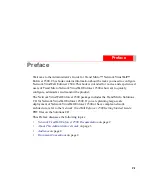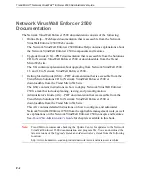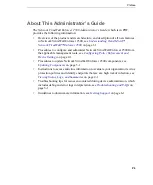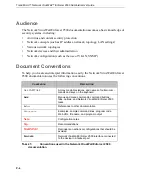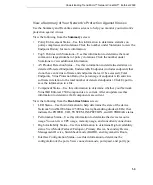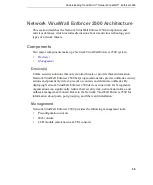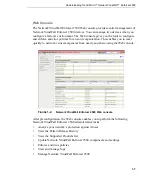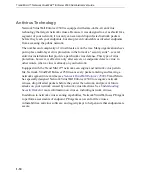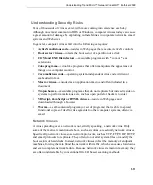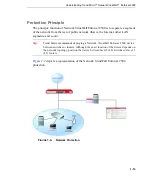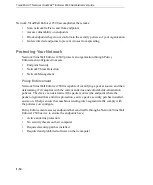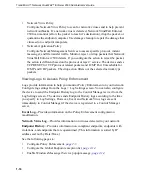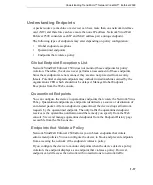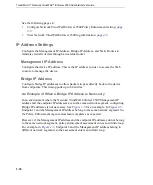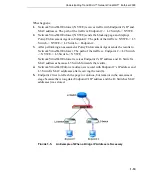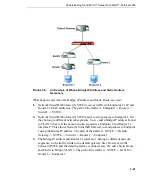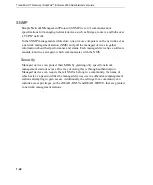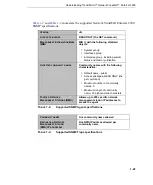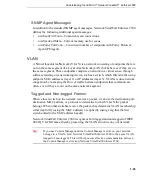
Understanding Trend Micro™ Network VirusWall™ Enforcer 2500
1
-
11
Understanding Security Risks
Tens of thousands of viruses exist, with more coming into existence each day.
Although once most common in DOS or Windows, computer viruses today can cause
a great amount of damage by exploiting vulnerabilities in corporate networks, email
systems and Web sites.
In general, computer viruses fall into the following categories:
•
ActiveX malicious code—
resides in Web pages that execute ActiveX controls
•
Boot sector viruses—
infects the boot sector of a partition or a disk
•
COM and EXE file infectors—
executable programs with *.com or *.exe
extensions
•
Joke programs—
virus-like programs that often manipulate the appearance of
things on a computer monitor
•
Java malicious code—
operating system-independent virus code written or
embedded in Java
•
Macro viruses—
encoded as an application macro and often included in a
document
•
Trojan horses—
executable programs that do not replicate but instead reside on
systems to perform malicious acts, such as open ports for hackers to enter
•
VBScript, JavaScript or HTML viruses—
reside in Web pages and
downloaded through a browser
•
Worms—
a self-contained program (or set of programs) that is able to spread
functional copies of itself or its segments to other computer systems, often via
email
Network Viruses
A virus spreading over a network is not, strictly speaking, a network virus. Only
some of the malware mentioned above, such as worms, are actually network viruses.
Specifically, network viruses use network protocols, such as TCP, FTP, UDP, HTTP,
and email protocols to replicate. They often do not alter system files or modify the
boot sectors of hard disks. Instead, network viruses infect the memory of endpoint
machines, forcing them to flood the network with traffic, which can cause slowdowns
and even complete network failure. Because network viruses remain in memory, they
are often undetectable by conventional file I/O based scanning methods.

